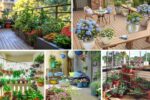A well-planned flower garden isn’t just a collection of beautiful blooms — it’s a thoughtfully designed space that delights the senses, complements your home, and brings you joy through the seasons. Whether you’re starting fresh or redesigning an existing space, careful planning makes the difference between a messy patch of plants and a cohesive, flourishing flower garden.
In this guide, we’ll walk you through 10 essential tips to plan a flower garden layout that’s not only visually stunning but also functional, low-maintenance, and suited to your specific environment.

Why Plan a Flower Garden Layout?
Before you start digging and planting, it’s important to understand why layout planning matters:
- Maximizes bloom potential
- Ensures plant compatibility
- Balances color, texture, and height
- Improves garden flow and usability
- Reduces maintenance and overcrowding
A great layout enhances the beauty of each plant and creates a harmonious, inviting space.
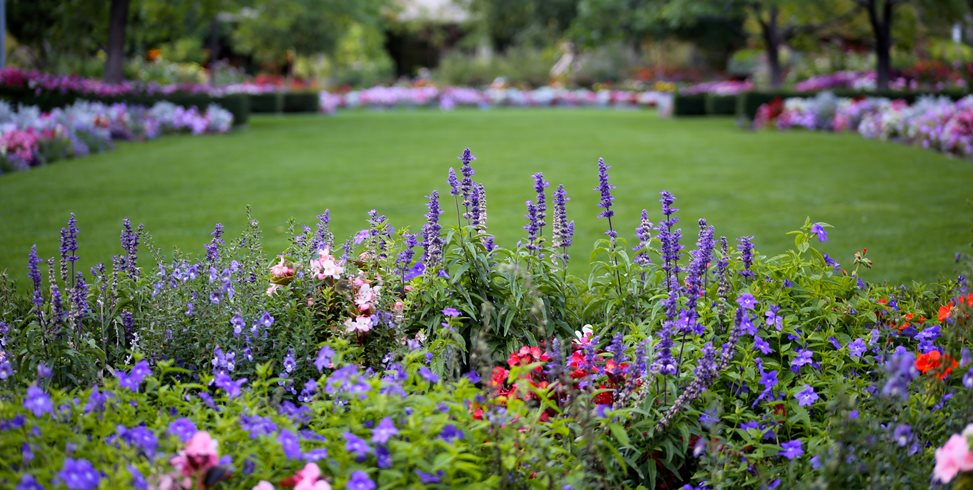
10 Tips to Plan a Flower Garden Layout
1. Assess Your Space and Environment
Before choosing plants or designing shapes, spend time getting to know your garden area.
Consider:
- Sun exposure: How many hours of sunlight does each part of your garden receive?
- Soil type: Is your soil sandy, clay-heavy, or loamy? Most flowers prefer well-drained, nutrient-rich soil.
- Moisture levels: Is the area naturally dry, moist, or somewhere in between?
- Climate zone: Know your USDA plant hardiness zone to select plants that will thrive year-round.
Tip: Sketch a simple map of your garden and mark out sun and shade patterns throughout the day.
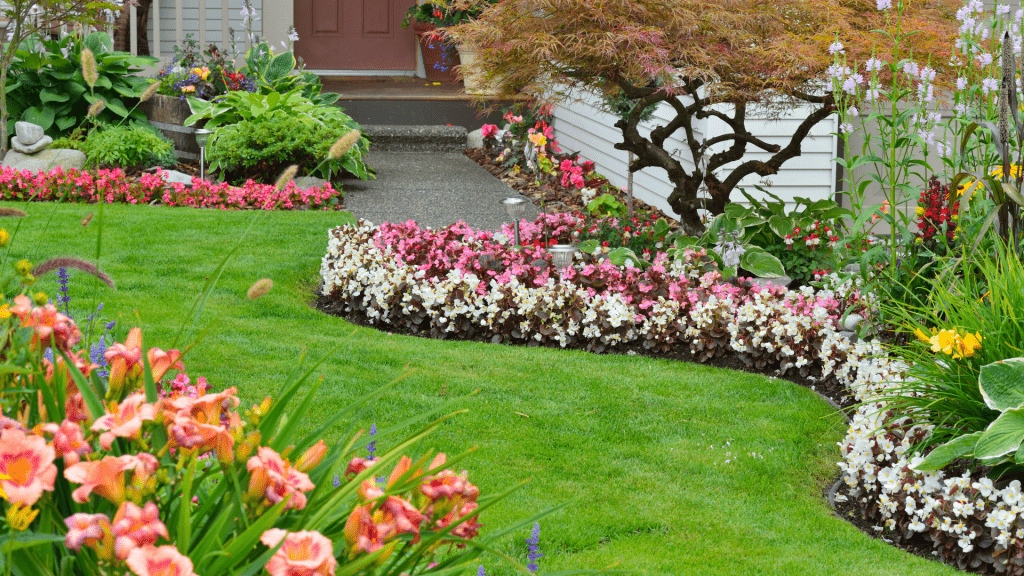
2. Define the Garden’s Purpose and Style
Decide what kind of flower garden you want to create. Will it be a:
- Formal garden with geometric lines and symmetry?
- Cottage-style garden with a natural, free-flowing feel?
- Pollinator-friendly garden to attract bees and butterflies?
- Color-themed garden like all-white moon gardens or vibrant rainbow beds?
Clarifying your garden’s purpose and style early will guide your plant choices and layout decisions.
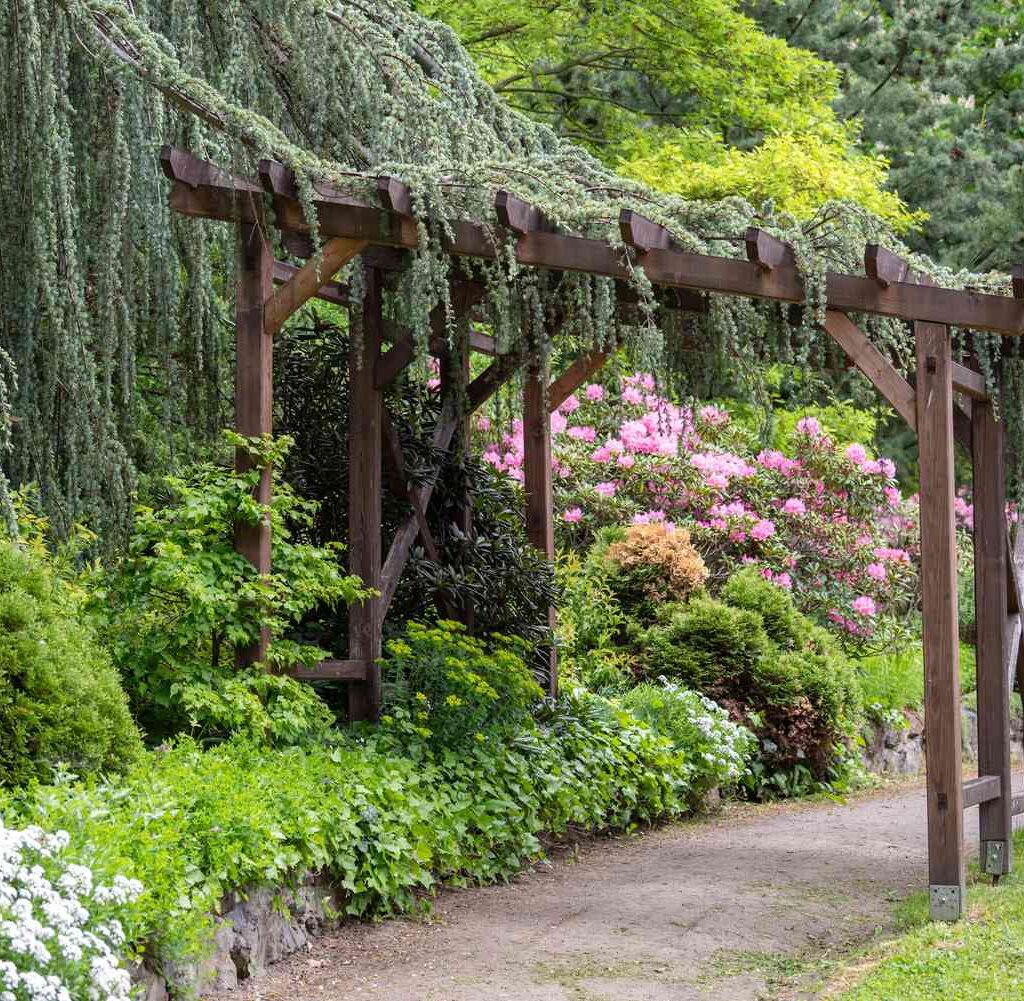
3. Choose a Focal Point
Every well-designed garden has a focal point — something that immediately draws the eye. It could be:
- A flowering shrub or small tree
- A birdbath or water feature
- A garden bench
- A decorative trellis or arbor
Position your focal point where it’s easily visible from key viewpoints, like your patio, driveway, or windows. Plan the surrounding plant layout to gradually build toward and complement that feature.
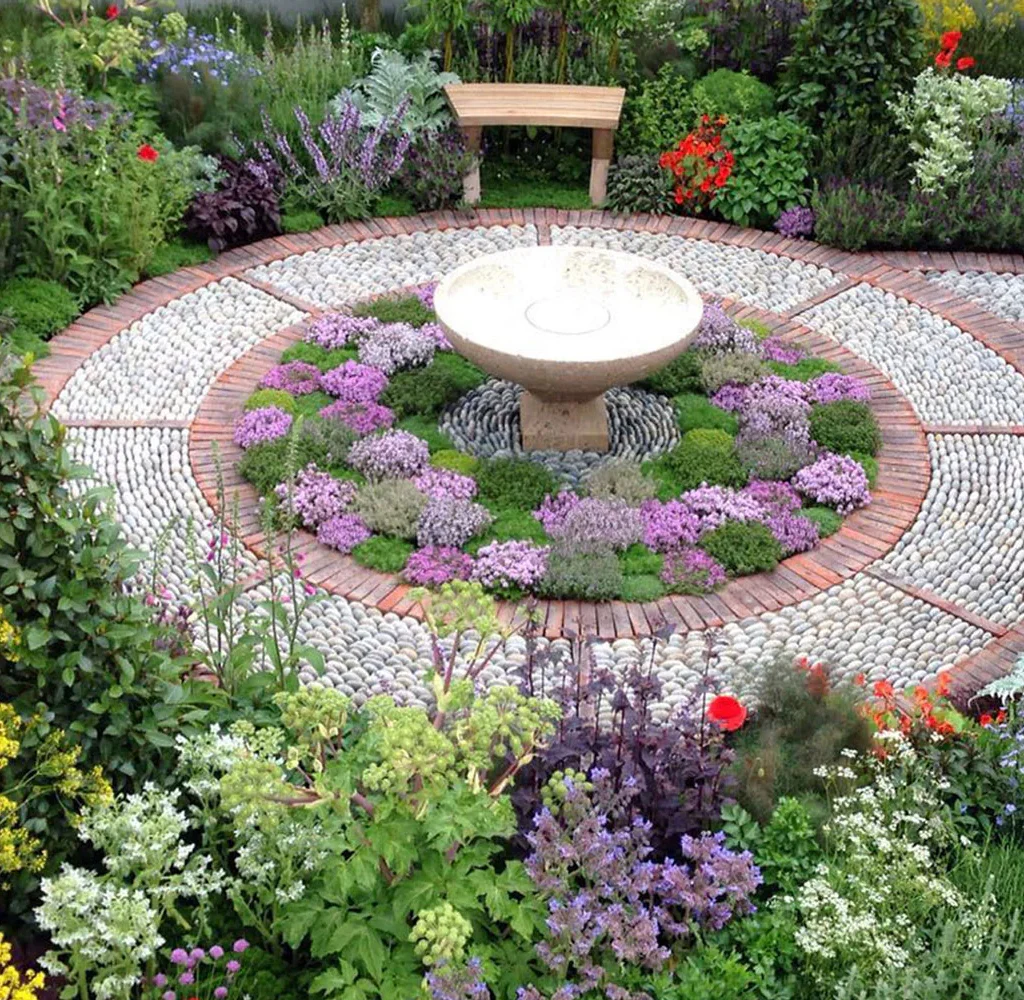
4. Plan for Continuous Blooms
A thoughtful garden layout ensures color and interest throughout the seasons. Choose a mix of plants that bloom at different times:
- Spring: Tulips, daffodils, irises
- Summer: Coneflowers, daylilies, black-eyed Susans
- Fall: Sedums, asters, ornamental grasses
- Winter interest: Evergreen shrubs, seed heads, and berries
Use a planting calendar to stagger bloom times and fill gaps so your garden always has something beautiful to offer.

5. Mix Plant Heights and Textures
A visually interesting flower garden combines plants of various heights and textures. Layer your plantings like this:
- Tall plants (3–6 ft) at the back or center (if the bed is island-style)
- Medium-height plants (1–3 ft) in the middle
- Low-growing plants (under 1 ft) along the front edges or as groundcovers
Mix bold, broad-leafed plants with fine, feathery textures to create depth and contrast.
Tip: Avoid a flat, one-dimensional look by alternating plant heights and forms.
6. Group Plants by Similar Needs
To simplify maintenance and keep plants healthy, group flowers with similar sunlight, soil, and watering requirements.
For example:
- Sun-loving plants like lavender, coreopsis, and salvia do best together.
- Shade-lovers such as hostas, ferns, and impatiens thrive in cooler, protected areas.
- Moisture-loving perennials like astilbe and ligularia prefer wetter spots.
Planting incompatible flowers together can result in poor growth or increased maintenance.
7. Think About Color Schemes
Color has a big impact on the mood and atmosphere of your garden. Before planting, decide whether you want:
- Monochromatic schemes (variations of one color)
- Complementary color combinations (like purple and yellow)
- Analogous colors (colors next to each other on the color wheel, like pink, red, and orange)
Use cool colors (blue, lavender, white) for a calm, relaxing vibe or warm colors (red, orange, yellow) for energetic, lively borders.
Tip: Include some green foliage plants or silver-leafed plants to break up bold color blocks and rest the eye.
8. Allow for Plant Growth and Spacing
It’s tempting to fill every gap when planting, but remember that flowers grow and spread. Check the mature size of each plant on its label and leave adequate space between them to:
- Prevent overcrowding
- Allow good air circulation
- Reduce the risk of disease
- Make future maintenance easier
Use temporary annuals or ground covers to fill in gaps while perennials mature.
9. Incorporate Pathways and Access Points
Paths add structure, charm, and practicality to your garden. Even a small flower bed benefits from access points for maintenance and enjoyment.
Consider:
- Stepping stones
- Gravel or wood chip paths
- Mulched trails
Paths invite visitors to wander through the flowers and provide easy access for watering, weeding, and deadheading.
10. Sketch a Rough Garden Plan
Once you’ve considered all the factors above, grab a pencil and sketch out your garden layout. Mark where taller plants, focal points, and pathways will go. You don’t need to be an artist — a simple, labeled plan will help visualize the final look and guide planting.
Tip: Use colored pencils or markers to represent different bloom colors and seasons for a clear picture of how your garden will evolve through the year.
Final Thoughts
A well-planned flower garden layout not only enhances your home’s curb appeal but also creates a sanctuary for you and local wildlife. By following these 10 essential tips, you’ll design a garden that’s as practical as it is beautiful — filled with continuous blooms, varied textures, and harmonious color schemes.
Whether you’re dreaming of a formal rose border, a whimsical cottage garden, or a pollinator paradise, a little careful planning now will result in seasons of effortless beauty ahead.
So grab your notebook, explore your outdoor space, and start designing the flower garden you’ve always envisioned!


